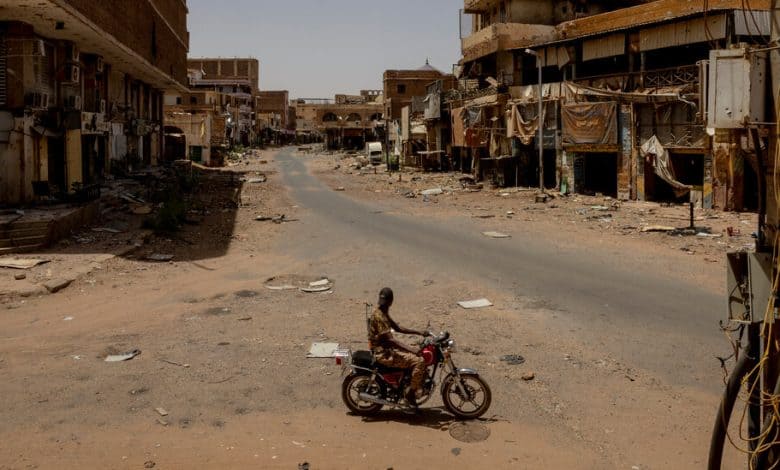A War on the Nile Pushes Sudan Toward the Abyss




A proud city of gleaming high rises, oil wealth and five-star hotels lies in ruins.
Millions have fled.
A famine threatens.
Supported by
SKIP ADVERTISEMENT
A War on the Nile Pushes Sudan Toward the Abyss
The gold market is a graveyard of rubble and dog-eaten corpses. The state TV station became a torture chamber. The national film archive was blown open in battle, its treasures now yellowing in the sun.
Artillery shells soar over the Nile, smashing into hospitals and houses. Residents bury their dead outside their front doors. Others march in formation, joining civilian militias. In a hushed famine ward, starving babies fight for life. Every few days, one of them dies.
Khartoum, the capital of Sudan and one of the largest cities in Africa, has been reduced to a charred battleground. A feud between two generals fighting for power has dragged the country into civil war and turned the city into ground zero for one of the world’s worst humanitarian catastrophes.
As many as 150,000 people have died since the conflict erupted last year, by American estimates. Another nine million have been forced from their homes, making Sudan home to the largest displacement crisis on earth, the United Nations says. A famine looms that officials warn could kill hundreds of thousands of children in the coming months and, if unchecked, rival the great Ethiopian famine of the 1980s.
Fueling the chaos, Sudan has become a playground for foreign players like the United Arab Emirates, Iran, Russia and its Wagner mercenaries, and even a few Ukrainian special forces. They are all part of a volatile stew of outside interests pouring weapons or fighters into the conflict and hoping to grab the spoils of war — Sudan’s gold, for instance, or its perch on the Red Sea.

Members of a Sudanese special forces unit posing for a photo during a military demonstration.
